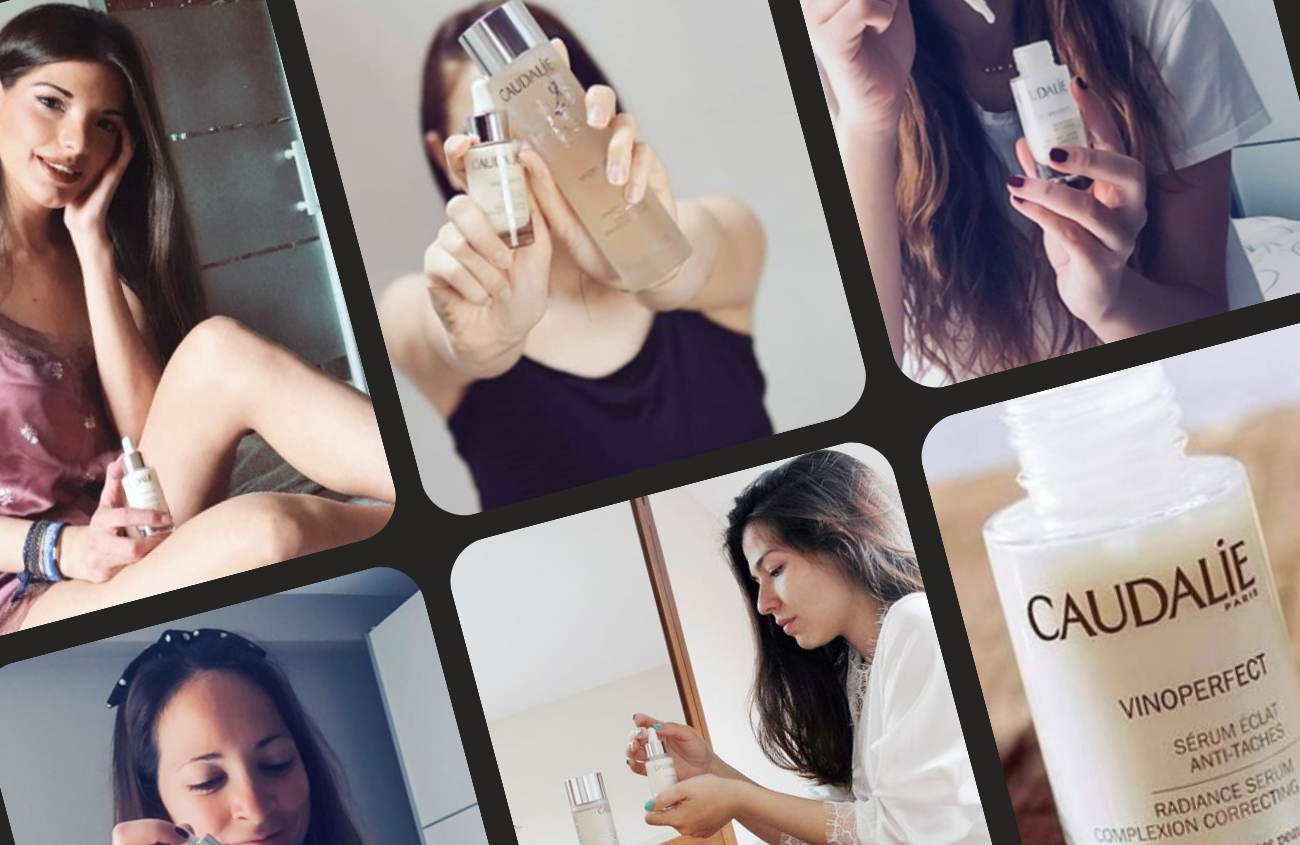User-Generated content versus Influencer-Generate content
In the ever-evolving landscape of digital media, content creation has become a driving force behind online engagement and brand visibility. Two prominent sources of content have emerged as influential players in this arena: User-Generated Content (UGC) and Influencer-Generated Content (IGC). Both have their unique characteristics and advantages, shaping the way audiences interact with brands and each other. This article aims to dissect the distinctions between UGC and IGC, shedding light on their unique characteristics and the strategic considerations brands must navigate.
- Read until the end for a very insightful Q&A session with Bastien Belot, Commercial Director Western Europe at TERRITORY Influence.
User-Generated Content (UGC): The Voice of the Masses
In terms of content creation, you have probably already produced User-Generated Content (UGC) without realizing it.
User-Generated Content refers to material created by consumers or users, often without direct compensation. It originates organically from the genuine experiences, opinions, and creative expressions of everyday people interacting with a brand.
One of the primary strengths of UGC lies in its authenticity and relatability. As a reflection of real user experiences, UGC fosters a sense of community and trust among consumers, creating a powerful connection between the brand and its audience. Whether we’re checking reviews from other customers before making a purchase or looking at real people wearing clothes in photos, UGC guides our decisions. It is omnipresent, influencing choices across various aspects of our lives, including shopping, travel, restaurant selections, and more.
UGC takes various forms, including social media posts, reviews, images, videos, and more. It thrives on spontaneity, providing a diverse and dynamic representation of the brand through the eyes of its consumers.
What makes UGC so powerful is its authenticity. It serves as a trusted source for consumers. At TERRITORY Influence, we recently conducted a study with 24k respondents, revealing that 90% of consumers consult UGC before making a purchasing decision, and 62% of them consider it a more reliable source than content created by brands themselves.
We strongly encourage brands to integrate UGC into their marketing strategy and content, as well as to promote its creation by engaging their communities. Beyond the trust they instill in consumers, UGC serves as an excellent means to gather authentic feedback on products or services.
- Check out this campaign with Caudalie for whom we gathered more than 21k of contents thanks to 8.900 nano and micro influencers.
Influencer-Generated Content (IGC): Curated Authenticity
Influencer-Generated Content involves collaborations between brands and individuals with significant social media followings, known as influencers. It is a strategic, often paid, approach to content creation that leverages the credibility and reach of influencers.
IGC relies on the credibility and reach of influencers, who curate content aligned with their personal brand. This curated content is designed to resonate with a targeted and engaged audience, offering brands access to a more controlled and specialized reach.
Unlike the spontaneous nature of UGC, IGC tends to be more professionally produced. It adheres to a brand’s aesthetic guidelines while incorporating the influencer’s unique style, resulting in content that is both polished and authentic. According to our latest survey, this authenticity makes 76% of Genz turn to influencers for purchase decisions.
For us, Influencer-Generated Content is a winning marketing strategy centred around the creation of authentic content by influencers to promote your business. It also provides more precise targeting than traditional communication channels.
- We set up a paid influencer campaign featuring 5 micro influencers for Perlino who generated +2.3 million online impressions.
Comparing UGC and IGC: Striking a Balance
So, what’s the difference between influencer content and UGC? Let’s decode it!
While both UGC and IGC serve as powerful tools for content marketing, they differ significantly in terms of origin, authenticity, and control. UGC relies on the spontaneity and authenticity of everyday users, providing a genuine reflection of the brand’s impact on its audience. On the other hand, IGC is a more controlled and curated approach, where brands give a specific brief and actively collaborate with influencers to shape the narrative and aesthetic.
UGC excels in building a sense of community and trust, as it showcases real experiences and opinions. However, it can be challenging for brands to maintain control over the narrative. IGC, with its professional polish and targeted reach, offers a more predictable outcome but might run the risk of appearing overly promotional. The key lies in striking a balance and understanding the unique advantages each approach brings to the table.
- Q&A with Bastien Belot, Commercial Director Western Europe at TERRITORY Influence.
How do you integrate UGC and IGC into different brand strategies in your agency?
Bastien Belot: Our approach begins with the strategic marketing challenges faced by our clients, which are at the core of our work with brands. We focus on these specific challenges rather than influence issues to provide personalized recommendations that seamlessly integrate into their marketing plan. Based on our clients’ challenges and their industries (pharma, luxury, food, beauty, etc.), we propose the most relevant mix of influencers 360° (nano, micro, macro, and stars). We usually recommend working with all these existing influencer profiles. For non-remunerated influencer profiles, we use our TRND database with over 700,000 consumers. Depending on the brand’s criteria, we target the most affinity and engagement profiles to fulfil the missions assigned to them, especially to develop User-Generated Content (UGC). Similarly, we use a questionnaire of 20 to 30 questions to refine the selection of profiles. For remunerated influencers, we use our CreatorIQ platform to select profiles in line with the challenges and results desired by our clients. We offer profiles based on their expression territory (foodies, lifestyle, etc.), platforms (Instagram, TikTok…), mechanics, and their community. By adopting this 360° method, we ensure having a large amount of UGC to reinforce trust and authenticity while using IGC that aligns with the brand’s universe.
Do brands tend to lean more towards UGC or Influencers? In your opinion, why?
Bastien Belot: The relevance of trends in influence depends on the industry of the brands. Indeed, it can be challenging to generalize trends between the food and luxury universes, for example. However, if we talk about a global trend, we observe that, five years ago, influencers (paid) were very popular with brands. Today, brand influence strategies increasingly integrate consumers (UGC). Indeed, consumers are becoming more informed and aware of the contracts that bind brands to influencers. This has led to a loss of trust and credibility, which no longer allows brands to meet their challenges using only influencers.
This is why the best mix for brands is one that combines both User-Generated Content (UGC) and Influencer-Generated Content (IGC). This combination allows brands to differentiate themselves by adding a touch of authenticity while maintaining a certain image quality in line with their universe.
Since the “crisis” of confidence regarding the excesses of influencer marketing, are brands more inclined to turn to UGC rather than influencers?
Bastien Belot: At TERRITORY Influence, we have not been affected by the recent pitfalls that have affected a small part of the influencer marketing market, and we do not speak of a crisis. We believe that these problems have no impact on trends in UGC and IGC. However, we believe that this crisis will lead to stricter regulation of the market, strengthening trust between consumers and influencers. We firmly believe that transparency and honesty are the keys to a healthy and sustainable relationship between brands, influencers, and consumers.
For you, what would be the main advantage of integrating UGC into your strategy? And influencers?
Bastien Belot: As we have seen before, integrating content generated by users or influencers has many advantages for a marketing strategy. Whether we’re talking about UGC or IGC, one of the main advantages is to humanize the brand’s communication. For many years, brands communicated unilaterally to convince consumers to buy their products or services, focusing only on-brand content. But today, they have realized that integrating content generated by consumers has become essential to continue to exist. By giving voice to users and influencers, brands can show their human and authentic side while creating an engaged community around their product or service. This approach also helps strengthen consumer trust in the brand by offering a more personalized experience and including them in the content creation process.
In a nutshell,
In the dynamic world of content creation, both User-Generated Content and Influencer-Generated Content play pivotal roles in shaping brand narratives, engaging audiences, and driving marketing success. UGC thrives on authenticity and community, while IGC leverages the influence and creativity of individuals with established online presences. Ultimately, the most effective content strategy often involves a thoughtful blend of both, allowing brands to enjoy the best of both worlds and create a comprehensive, engaging, and relatable brand story in the digital realm.



